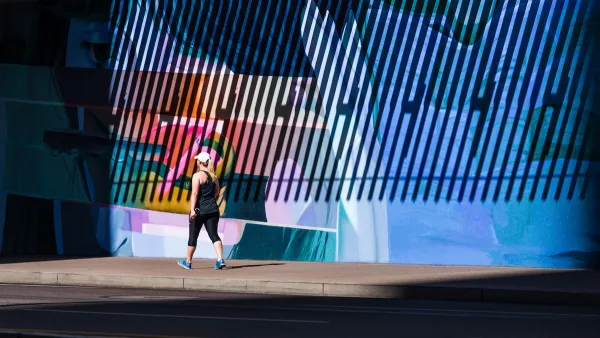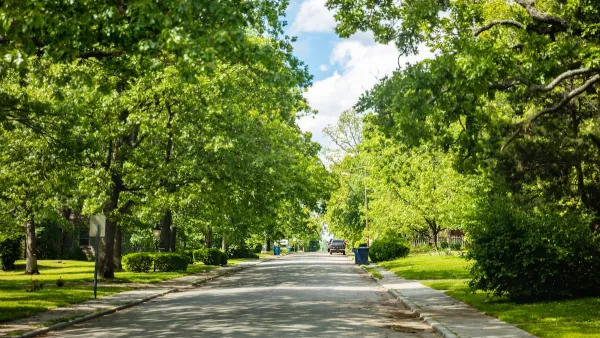New research suggests that cooling pavement treatments can actually make pedestrians standing on it feel hotter.

A popular new tool for cooling urban streets and sidewalks could have some unintended consequences, reports Linda Poon in Bloomberg CityLab. According to Poon’s article, “recent research in Phoenix has resurfaced a glaring tradeoff: The reflective coating can make pedestrians standing on the treated pavement feel even hotter.”
“When [professor V. Kelly Turner] and researchers at Arizona State University looked at the impacts of the first US program in Los Angeles, they found that around noon on a hot, dry day, a person standing on cool pavement could feel more than 7 degrees warmer than if they were to stand on uncoated asphalt. The mean radiant temperature, which is a measure of how humans experience the heat, fell in the afternoon but was still 3 degrees warmer.”
Those findings were reaffirmed by an Arizona State University study. However, Poon notes that “ASU’s study suggested minimal difference in mean radiant temperatures between sidewalks near traditional asphalt streets and those near reflective pavement,” meaning pedestrians walking on surfaces near coated streets but not directly on coated surfaces wouldn’t be affected.
For Turner, this points to a need to prioritize shade trees, a proven solution to urban heat, before trying more experimental solutions. But cooling pavement treatments have their place. By dramatically reducing surface temperatures, cool pavements can prevent burn injuries. “Perhaps a more pronounced effect of cool pavement technology that further appeals to cities is that it decreases thermal strain on the pavement, reducing cracking and helping extend its lifespan.” And one pavement treatment used in the Pacoima neighborhood of Los Angeles is showing promising results, with early research indicating that the treatment cools ambient temperature and doesn’t create glare in the same way as others.
Until more data on cool pavement coatings is available, experts believe cities should “carefully consider where to apply [them], and weigh both the costs and benefits alongside other interventions.”
FULL STORY: The Hottest Urban Heat Solution Comes With a Glaring Tradeoff

Analysis: Cybertruck Fatality Rate Far Exceeds That of Ford Pinto
The Tesla Cybertruck was recalled seven times last year.

National Parks Layoffs Will Cause Communities to Lose Billions
Thousands of essential park workers were laid off this week, just before the busy spring break season.

Retro-silient?: America’s First “Eco-burb,” The Woodlands Turns 50
A master-planned community north of Houston offers lessons on green infrastructure and resilient design, but falls short of its founder’s lofty affordability and walkability goals.

Test News Post 1
This is a summary

Analysis: Cybertruck Fatality Rate Far Exceeds That of Ford Pinto
The Tesla Cybertruck was recalled seven times last year.

Test News Headline 46
Test for the image on the front page.
Urban Design for Planners 1: Software Tools
This six-course series explores essential urban design concepts using open source software and equips planners with the tools they need to participate fully in the urban design process.
Planning for Universal Design
Learn the tools for implementing Universal Design in planning regulations.
EMC Planning Group, Inc.
Planetizen
Planetizen
Mpact (formerly Rail~Volution)
Great Falls Development Authority, Inc.
HUDs Office of Policy Development and Research
NYU Wagner Graduate School of Public Service




























